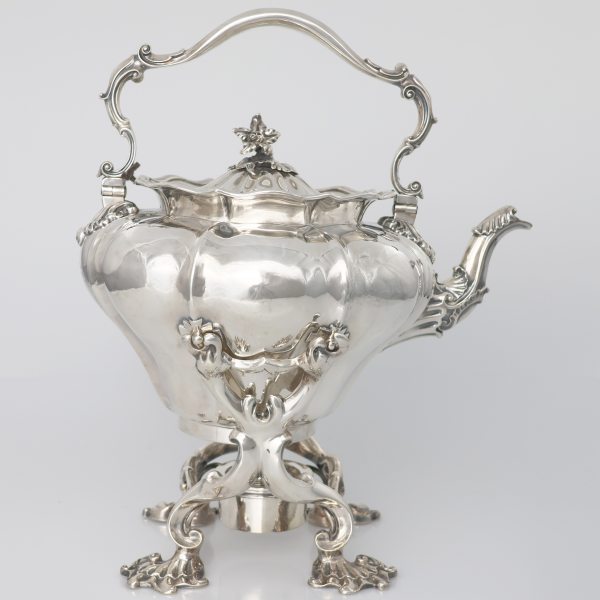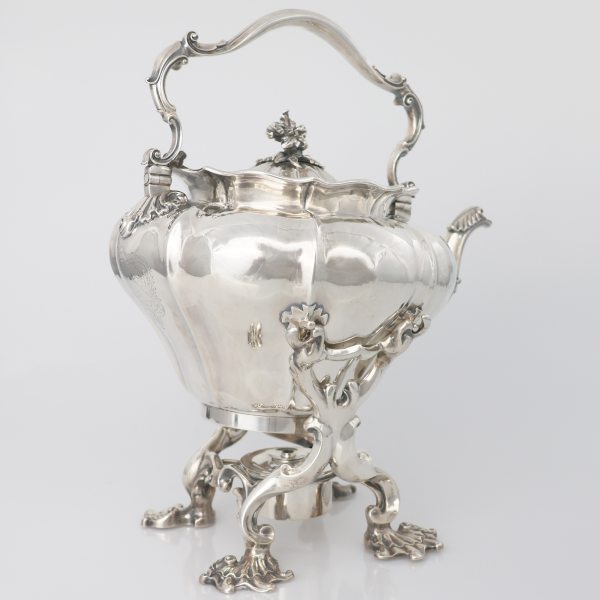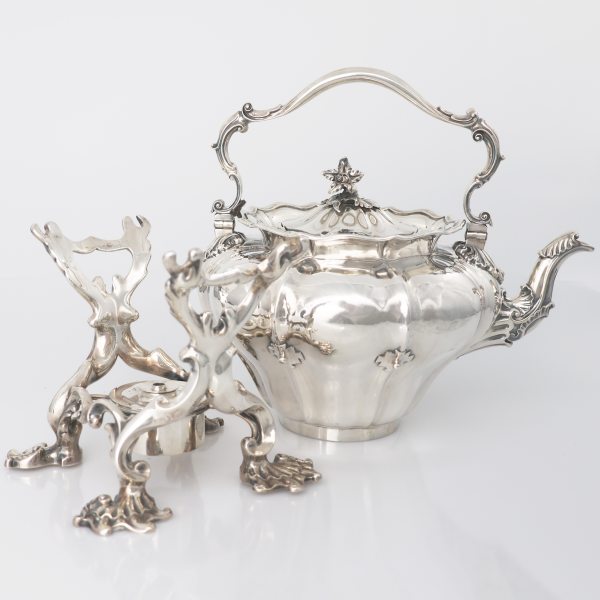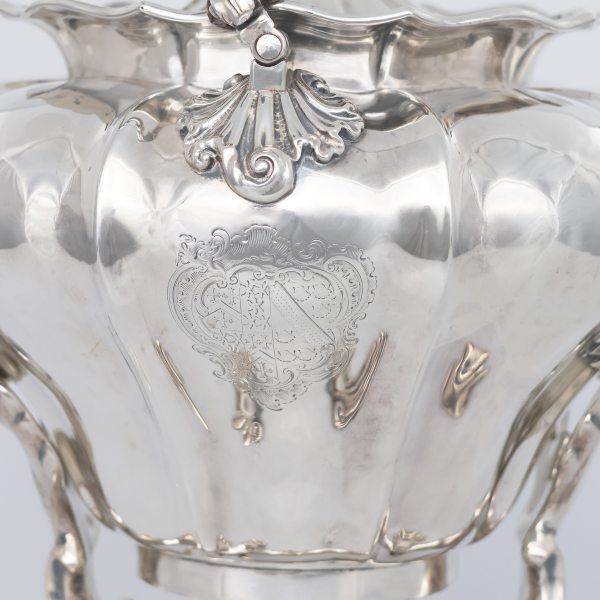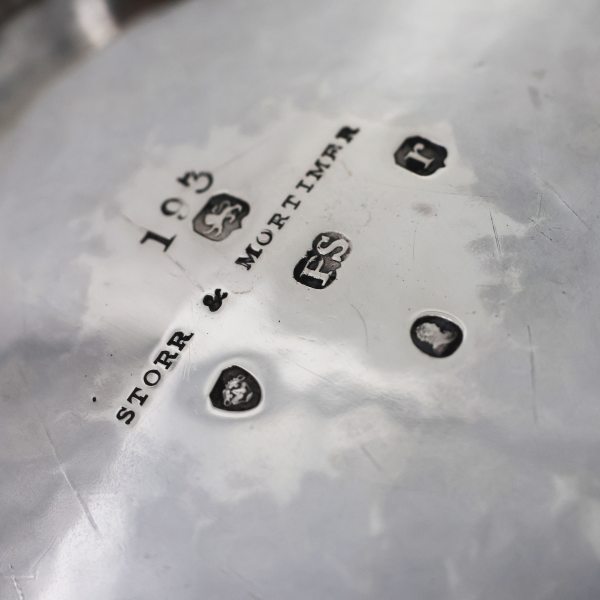A William IV sterling silver kettle on stand, Paul Storr for Storr & Mortimer, London, 1832
A grooved circular body resting on a four-footed stand with U-shaped supports. A complete set of readable and decipherable marks stamped on the base, stand, burner, lid, and handle. The body and burner are engraved with a noble coat of arms.
Sterling Silver with 5 Hallmarks:
Duty mark: Head King William IV
HxLxD 14,57in x 12,40in x 9,45in
99,40oz
Private collection
Slight signs of age and superficial scratches. The five hallmarks are present at the base of the kettle. "Storr & Mortimer" with the number 193 is engraved at the base of the kettle. On the handle, there is the passant lion and the duty mark. On the underside of the lid, there is the maker's mark, the lion passant and the date letter for the year. On the stand and burner, the maker's mark, the lion passant, the date letter for the year, and the duty mark are also present.
Since we are not professional conservators or restorers, we urge you to consult with a restorer or conservator of your choice who will be better able to provide a detailed, professional report. Prospective buyers must understand that any statement made by Coradi Rare Finds is merely a subjective opinion.
Storr Paul - London, October 30 1770; London, March 18 1844; was a prominent English silversmith and one of the most celebrated craftsmen of the Regency and early Victorian periods. He is best known for his exceptional skill in producing high-quality silverware, including tableware, tea sets, and presentation pieces, many of which were grand and ornate, reflecting the tastes of the time.
Early Life and Training:
Storr was born in the year 1770 in London. He began his apprenticeship at a young age under the tutelage of the renowned silversmith William Wigan. He eventually opened his own workshop and, through his skill and craftsmanship, became one of the most important silversmiths in London.
Career Highlights:
Success and Reputation: Storr gained an excellent reputation for his ability to create finely detailed and highly decorative silver objects. He worked in the neoclassical style and was especially known for producing elegant and intricate designs in silver and gold. His works included everything from tea services and trays to large ceremonial items.
Partnership with John Mortimer: In 1807, Paul Storr formed a partnership with the wealthy and influential silversmith John Mortimer. The firm, known as Storr & Mortimer, became highly successful and was responsible for many important commissions, including items for royal families and the aristocracy.
Royal Commissions: Storr’s work was highly sought after by the British royal family and other wealthy patrons. Notably, he created numerous items for King George III, King George IV, and the future Queen Victoria. One of his most famous commissions was a large ceremonial piece, the Royal Regalia for the coronation of King George IV in 1821. He also created presentation pieces for political leaders and dignitaries.
Designs and Innovation: Paul Storr was known for his ability to innovate and adapt to changing tastes. While much of his work was based on neoclassical forms, he was also known for embracing elements of the Empire and Regency styles. His works were often marked by classical motifs like urns, acanthus leaves, and intricate geometric patterns. His mastery of repoussé (hammered relief decoration) and chasing (fine detailing) made his silverware stand out.
Legacy:
Paul Storr is considered one of the greatest English silversmiths in history, and his works are highly valued by collectors today. His creations continue to be housed in museums, private collections, and auction houses. The Storr & Mortimer firm continued after his death, though the business eventually dissolved in the mid-19th century.
Storr’s impact on silver craftsmanship was significant, and his legacy is visible in the enduring popularity of Regency-era silver. His designs, which combined technical precision with a flair for artistic detail, set a standard for silversmithing that has influenced generations of artisans.
Notable Works:
Some of Paul Storr's most famous pieces include:
The Storr & Mortimer Tea Service: A beautifully designed set made for a royal patron.
The George IV Coronation Silver: A grand ceremonial piece created for the coronation of King George IV.
The Great Exhibition: Storr’s silverware was displayed at the Great Exhibition of 1851, where it received acclaim.
Today, Paul Storr's works are considered masterpieces of English silver and are highly prized in the world of antiques and fine art.


